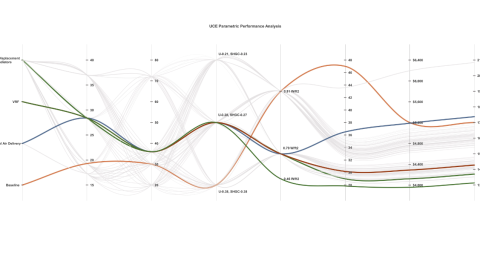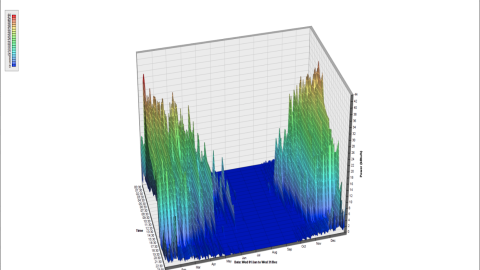Energy modeling allows a team to simulate a building’s energy performance before it’s built. Energy use intensity (or “EUI”) is a measure of the energy use per square foot per year, and it’s the industry standard metric for energy modeling. The lower the EUI, the lower a building’s energy needs. Our EUI goal was 28. Through several energy modeling iterations, we exceeded our EUI by fine-tuning insulation levels, HVAC system design, windows, and other building components. This allowed us to determine how much on-site solar we needed to fully power the Climate Innovation Center.
Key considerations for energy modeling
The EUI your energy modeler generates is an estimate of how your building will perform. To help ensure that your EUI is as accurate as possible, it’s important to hire a qualified energy modeler. Find a qualified energy modeler via ASHRAE, the Association of Energy Engineers, or Rocky Mountain Power’s Wattsmart program. The energy modeler for our project worked for the mechanical engineering firm involved in the project.
A standard office building in the U.S. has an EUI of 52.9. The Climate Innovation Center’s estimated EUI is 27.8! We chose our EUI goal of 28 based on the 2021 IECC Appendix CC – Zero Energy Commercial Building Provisions. Other helpful resource to help you determine your EUI target include ENERGY STAR Technical Reference and NBI’s Getting to Zero database.
Finalizing your project’s design and estimated EUI requires running numerous iterations of the energy model. Each simulation will assess the energy efficiency levels of various building components, helping you refine the building’s overall energy performance. Numerous modeling iterations will help the design team select the right energy performance of the building components and systems to meet your EUI target.
At this early design stage, high performance commercial buildings are eligible for the Designed to Earn the ENERGY STAR certification. Once we knew the final EUI estimate from our energy model and final design elements, we created an ENERGY STAR profile for our building in the Portfolio Manager program, including inputting our estimated annual electricity consumption and other building and operating details. We followed the steps to create a Statement of Energy Design Intent and worked with our architect to submit this document to ENERGY STAR.


Building Team for Step 3





